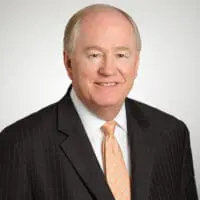Employee Benefits
Catch Back Up on the SECURE 2.0 Increased Catch-Up Limits for 2025
With SECURE 2.0’s increased catch-up contribution limits set to take effect next year, it’s time for 401(k) plan sponsors to brush up on the rules and consider how to administer the changes.
Under the current rules, 401(k) plans may allow participants to make catch-up contributions when they are age 50 or older. For 2024, the catch-up contribution limit is $7.500.
SECURE 2.0 creates a window of increased catch-up contribution limits for participants ages 60–63. Below are key things 401(k) plan sponsors should know about this change:
- Are the changes mandatory? Plan sponsors are not required to offer catch-up contributions. However, further guidance is necessary to confirm whether the changes are mandatory for plans that choose to offer catch-up contributions.
- When do the changes take effect? The new limits take effect for tax years beginning after December 31, 2024.
- Which participants are eligible for the increased limit? Participants are eligible for the increased limits for the years in which they attain ages 60, 61, 62, and 63.
- What is the increased limit? The increased catch-up contribution limit for eligible participants is the greater of: (a) $10,000, subject to cost-of-living adjustments starting in 2026; or (b) 150% of the limit in effect for 2024 (i.e., $11,250).
While the change seems straight forward, administration may be complex. For example, plan sponsors should consider how to track eligibility for the increased limits, in addition to tracking eligibility for regular catch-up contributions, and how to re-impose the lower catch-up contribution limits when participants age out of the higher limits. Employers may need to work with their payroll teams and update their existing processes (e.g., payroll codes) to implement these changes.
Finally, keep in mind that the increased catch-up contribution limits are separate from the SECURE 2.0 Roth catch-up rule for certain high-earning individuals, which the IRS delayed to 2026. For information about the Roth catch-up contribution rule, see our Employee Benefits Blog, “IRS Delays Roth Catch-Up Contribution Requirement.”










